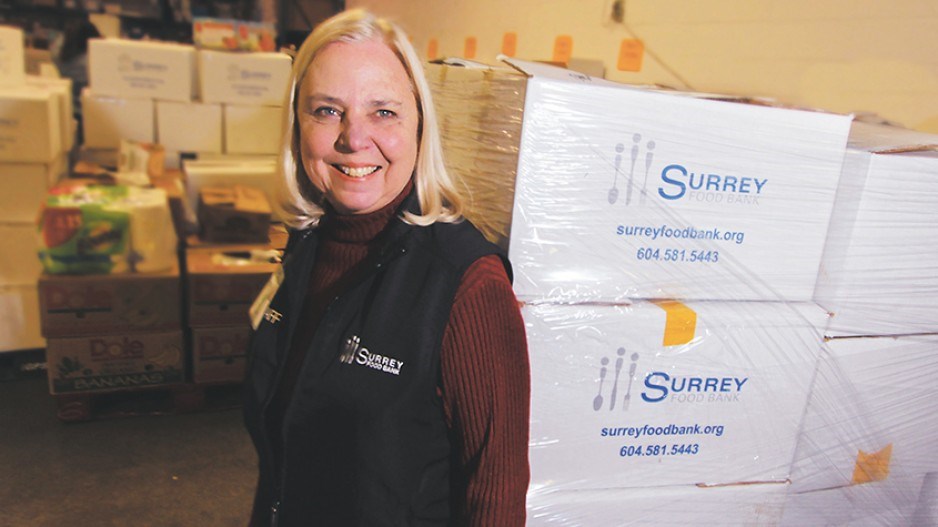Each day the Surrey Food Bank helps anywhere from 200 to 300 families – which works out to approximately 14,000 people a month looking to bridge financial hardship in their lives.
The food bank, which runs through approximately $30,000 worth of food per day, requires a minimum of 40 volunteers. As Surrey continues to expand as one of Canada’s fastest-growing cities, so does the local community non-profit organization.
Marilyn Herrmann, the executive director of the Surrey Food Bank Society, said the growing demand has created a problem for the organization.
“We’re in a space that’s 8,000 square feet, and we need to be in a space around 20,000 square feet on about an acre of land to accommodate parking and requirements for running a warehouse.”
But Herrmann added that it’s not a new problem. For close to five years, the society has been searching to move out of its location on City Parkway just across the Pattullo Bridge.
However, the non-profit organization has found it difficult to compete for land during the Fraser Valley real estate boom, which is expected to post another record year for sales and home prices across Surrey.
“To be where clients can get to us we have to be close to a major bus route,” explained Herrmann, who is also the chairwoman of Foodbanks BC, and sits on the Food Banks Canada board of directors.
“And of course a major bus route is where everyone wants to be. And we’re fighting with the big developers who are, quite frankly, grabbing land or grabbing older buildings to tear down before we can even get our finger on it.”
Surrey’s last population count came in 2011, putting the community at about 468,000 people. Many believe the city could now be well over half a million and on pace to pass Vancouver as B.C.’s largest city within five years.
Herrmann is finding it hard to keep up with demand. Each year the food bank has to raise $1.4 million to meet operating costs, because, as noted on its website, it does not receive “core government funding.” It goes through 2.04 million kilograms of food each year and has recently resorted to using the recreational centre across the road to meet its growing client base.
A recent Kwantlen Polytechnic University study found that 41% of the Surrey Food Bank’s clients are children, that most of the clients do not use the service regularly and that one of its major demographics is senior citizens on fixed incomes.
Clients are allowed to use the food bank only once every two weeks unless they have small children or are pregnant. Herrmann added that the larger issue of finding a new home to meet this client base is faced by food banks in many cities.
“When we ask people what they really want when they come into the food bank, what they say is, ‘I need affordable housing,’” she added. “When I talk to seniors where 70% of their paycheque is going to accommodation, that’s not right.”
Chris Thornley, founder of Surrey-based graphic design firm Thornley Creative Communications, has been volunteering for the food bank for close to 20 years. He said he doesn’t want to point the finger directly at developers for the bank’s inability to find a new space.
“I don’t think anyone’s really doing it on purpose,” said Thornley. “I know there are some developers out there that are more socially conscious than others. I guess a possibility might be some kind of land swap that would be mutually beneficial to all parties.”
Herrmann said in the meantime the Surrey Food Bank will continue to adapt to its growing client base any way it can.
“A lot of people think if the food bank shuts its doors that the government will pick up the need, and it just can’t come to that,” she said. “I don’t see that happening. Our challenge here in Surrey is in order to meet the demand we have to build to capacity – so capacity means we need a bigger building. We’ve been desperately searching for the past five years for something two to three times bigger than what we’ve got.”




